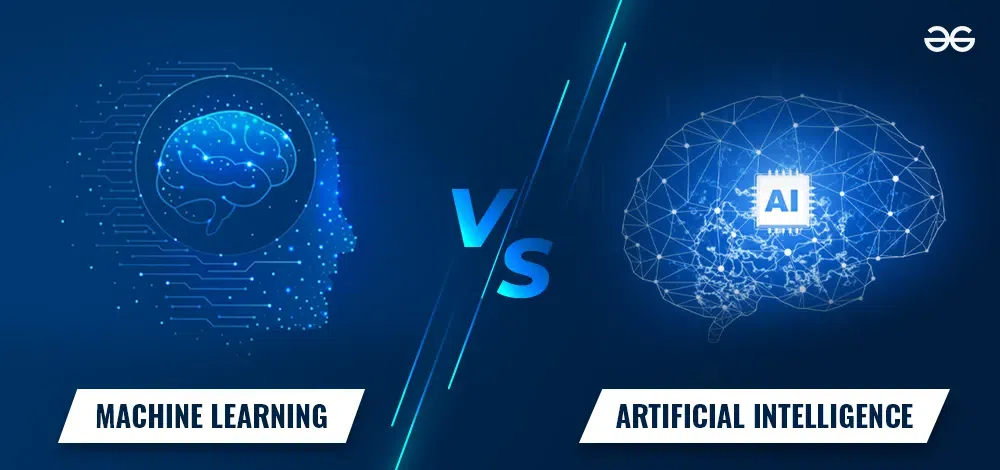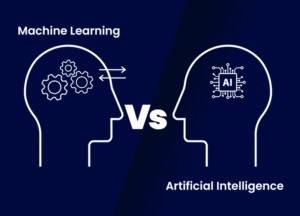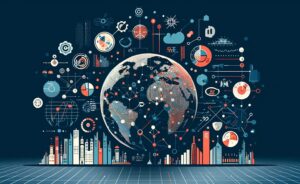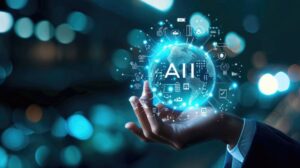AI vs Machine Learning – Difference Between Artificial Intelligence and ML
Introduction
Artificial Intelligence (AI) and Machine Learning (ML) are two of the most discussed technologies of the 21st century. They are often used interchangeably in conversations, tech blogs, and even business pitches. However, while AI and ML are closely related, they are not the same.
Think of AI as the bigger picture—a broad field that focuses on building intelligent systems capable of simulating human-like thinking and decision-making. Machine Learning, on the other hand, is a subset of AI that enables machines to learn from data without being explicitly programmed.
This distinction may sound subtle, but in reality, it defines how businesses, researchers, and developers deploy these technologies in various applications, from self-driving cars to personalized recommendations on Netflix.
In this article, we’ll dive deep into:
-
What Artificial Intelligence (AI) is.
-
What Machine Learning (ML) is.
-
Key differences between AI and ML.
-
Types of AI vs types of ML.
-
Real-world use cases of AI and ML.
-
Advantages, limitations, and future outlook.
-
Frequently asked questions (FAQs).
By the end, you’ll have a comprehensive understanding of AI vs Machine Learning and why the difference matters.
1. What is Artificial Intelligence (AI)?
Artificial Intelligence is the science of making machines smart enough to perform tasks that usually require human intelligence. The goal of AI is to create systems that can perceive, reason, act, and adapt like humans.
Key Capabilities of AI
-
Reasoning – Making logical decisions.
-
Learning – Improving from experience.
-
Perception – Understanding the environment through vision, sound, and other senses.
-
Problem-solving – Finding solutions to complex challenges.
-
Language understanding – Processing and generating natural language.
Examples of AI in Action
-
Virtual assistants like Siri, Alexa, and Google Assistant.
-
Autonomous vehicles like Tesla’s self-driving cars.
-
AI-powered chatbots for customer support.
-
Fraud detection systems in banking.
-
AI-driven healthcare diagnostics.
AI is broad—it includes not just machine learning, but also other approaches such as rule-based systems, expert systems, natural language processing, robotics, and computer vision.
2. What is Machine Learning (ML)?
Machine Learning is a subset of AI that enables systems to learn patterns from data and make predictions or decisions without being explicitly programmed.
Instead of coding rules manually, developers feed data into an algorithm that adjusts itself based on experience.
How ML Works
-
Input data (images, text, numbers, etc.) is provided.
-
Algorithms process and analyze the data.
-
Models are trained to recognize patterns.
-
Predictions/decisions are made on new data.
Key Types of Machine Learning
-
Supervised Learning – Learning from labeled data.
-
Example: Predicting house prices from features like location and size.
-
-
Unsupervised Learning – Finding hidden patterns in unlabeled data.
-
Example: Customer segmentation in marketing.
-
-
Reinforcement Learning – Learning by trial and error.
-
Example: Training robots to walk or play games like chess.
-
Examples of ML in Action
-
Netflix and Spotify recommendations.
-
Email spam filters.
-
Google Translate improving accuracy with use.
-
Credit card fraud detection.
-
Face recognition in smartphones.
3. AI vs Machine Learning – The Key Differences
While Machine Learning is an essential component of AI, it is not the same as AI.
Here’s a breakdown of the main differences:
| Feature | Artificial Intelligence (AI) | Machine Learning (ML) |
|---|---|---|
| Definition | Broad field focused on creating intelligent systems. | Subset of AI that learns from data. |
| Goal | Simulate human intelligence to solve complex problems. | Enable systems to learn and improve from data. |
| Scope | Includes ML, deep learning, NLP, robotics, etc. | Narrow focus on algorithms and data. |
| Approach | Uses rules, logic, and learning techniques. | Purely data-driven. |
| Human Involvement | Mimics human reasoning and decision-making. | Requires humans to provide training data. |
| Output | Can be reasoning, planning, or decision-making. | Predictions or classifications. |
| Examples | ChatGPT, self-driving cars, humanoid robots. | Netflix recommendations, spam filters. |
4. Types of AI vs Types of ML
Types of Artificial Intelligence
AI is generally divided into three categories:
-
Artificial Narrow Intelligence (ANI) – Specialized AI (e.g., Siri, spam filters).
-
Artificial General Intelligence (AGI) – Human-like intelligence (still theoretical).
-
Artificial Superintelligence (ASI) – Intelligence beyond human capability (future concept).
Types of Machine Learning
-
Supervised Learning – With labels.
-
Unsupervised Learning – Without labels.
-
Reinforcement Learning – Trial-and-error learning.
-
Semi-supervised Learning – Combination of labeled and unlabeled data.
5. Real-World Applications of AI vs ML
Applications of AI
-
Healthcare – AI for diagnostics, drug discovery.
-
Finance – Robo-advisors, fraud detection.
-
Retail – Smart shopping assistants.
-
Manufacturing – Predictive maintenance.
-
Education – Personalized learning platforms.
Applications of ML
-
Search Engines – Google search ranking algorithms.
-
E-commerce – Amazon’s product recommendations.
-
Social Media – Facebook and Instagram feed personalization.
-
Transportation – Traffic prediction with ML models.
-
Cybersecurity – Identifying anomalies in networks.
6. Advantages of AI and ML
Benefits of AI
-
Automates repetitive tasks.
-
Provides human-like decision-making.
-
Enhances creativity through generative models.
-
Improves efficiency across industries.
Benefits of ML
-
Learns automatically from data.
-
Can handle massive datasets.
-
Continuously improves accuracy.
-
Applicable across diverse sectors.
7. Limitations of AI and ML
Limitations of AI
-
Expensive to build and maintain.
-
Ethical concerns (bias, surveillance).
-
Lack of general intelligence (for now).
Limitations of ML
-
Requires large amounts of data.
-
Black-box problem (hard to interpret results).
-
Vulnerable to biased training data.
8. AI vs ML in Business
Businesses often confuse AI and ML. The reality is:
-
AI is used to develop end-to-end intelligent solutions (chatbots, robotics).
-
ML powers specific predictive models (customer churn prediction, fraud detection).
Example in Business
-
An AI-driven eCommerce system may use ML algorithms to recommend products, NLP for chatbot support, and computer vision for image recognition.
9. Future of AI vs Machine Learning
-
AI Future: Moving towards AGI and ethical AI. Integration into daily life (smart homes, self-driving cars).
-
ML Future: More explainable ML, automated ML (AutoML), and use in quantum computing.
Both will grow together—AI needs ML to learn, and ML relies on AI’s broader vision.
10. AI vs ML – Frequently Asked Questions (FAQs)
1. Is AI better than ML?
Not really. AI is the broader concept, while ML is one approach within AI.
2. Can ML exist without AI?
No. ML is part of AI. AI can exist without ML (through rule-based systems), but ML always falls under AI.
3. Is ChatGPT AI or ML?
ChatGPT is AI powered by ML and Deep Learning (a subset of ML).
4. Which is more difficult, AI or ML?
AI is broader and more complex, while ML focuses narrowly on learning from data.
5. Which has better career scope?
Both are in high demand. AI jobs often require broader expertise, while ML specialists focus on algorithms and data science.
Final Thoughts
The debate of AI vs Machine Learning is less about competition and more about understanding the hierarchy.
-
AI is the overarching field aiming to create intelligent systems.
-
ML is one of the key methods used to achieve AI’s goals.
If AI is the human brain equivalent, then ML is the process of learning that the brain undergoes. Without ML, AI wouldn’t be able to improve itself. Without AI, ML would just be an isolated tool without broader purpose.
As industries adopt AI and ML across healthcare, finance, education, and everyday life, understanding their differences helps organizations make smarter investments and individuals build future-ready careers.
The bottom line: AI is the dream, ML is the path.
https://bitsofall.com/https-www-yourwebsite-com-convergence-of-iot-and-machine-learning/
Smart Cities and IoT Applications: Building the Future of Urban Living







